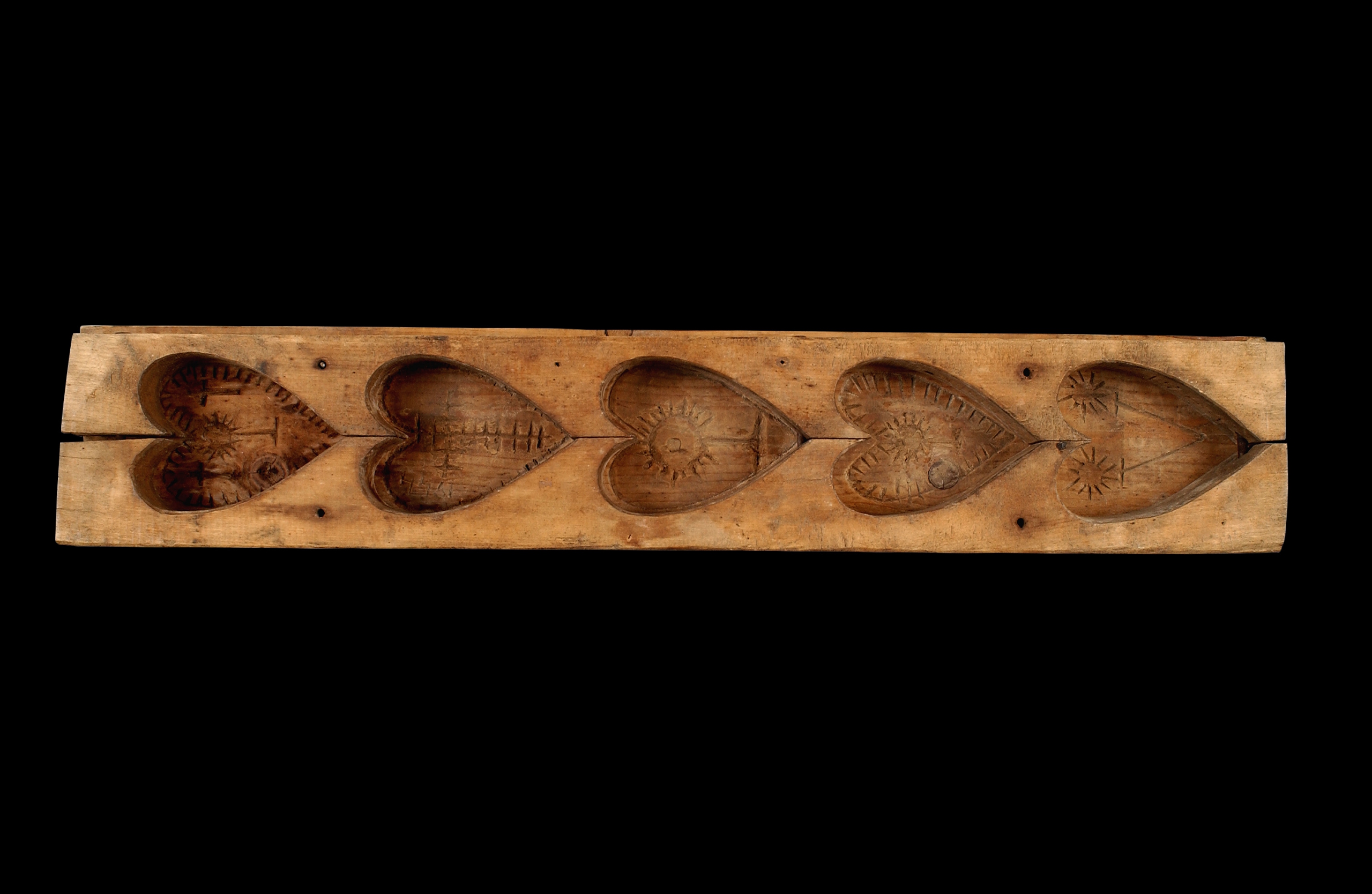Maple Sugar Mould
Artifact


Image
Video
Audio
 Activities
Activities
DO
Try making your own maple sugar candies, with the help of an adult.
Heat pure maple syrup to 112°C (235˚F), stirring occasionally. Remove the syrup from the heat, and let it cool to 80°C (175˚F), without stirring (about 10 minutes). Next, stir the mixture rapidly with a wooden spoon for about 5 minutes, until the colour turns lighter and the mixture thickens. Pour the sugar into moulds and set aside to cool. Enjoy!
Note: Boiling and handling hot maple syrup can be dangerous, and should only be done by an adult.
LOOK
What material is this mould made of? Why do you think this material was used? If you were to make a mould today, what material would you use? Why?
DO
Are there sugar maple trees where you live? Do a little research to find out why, or why not.
Additional Activity: On a map of Canada, colour in the areas where maple trees grow.
DO
Design your own candy mould. What shapes and symbols would you include? Who would you give your candy to? Explain your choices.
Details
 Materials
Materials - Wood
Historical Context
Choose one of the three levels below to match your needs.
- This wooden mould was used to make maple candy.
- In New France, hot maple sugar was poured into moulds like this one. When it cooled, it hardened into candy.
- Indigenous Peoples had been collecting and using maple sap long before Europeans arrived.
This maple sugar mould is made of carved wood. Hot maple sugar poured into the mould would harden into heart shapes as it cooled. This mould is not from Agathe de Saint-Père’s time, but it shows how the tradition of collecting maple sap has continued.
Indigenous communities had been collecting and using maple sap long before Europeans arrived. The settlers learned this process from them.
This maple sugar mould is made of carved wood. Hot maple sugar poured into the mould would harden into heart shapes as it cooled. This 19th-century mould is not from Agathe de Saint-Père’s time, but it shows how the tradition of collecting maple sap has continued for generations in the St. Lawrence Valley.
Indigenous Peoples of the Eastern Woodlands tapped maple trees for sap long before Europeans arrived. Settlers in New France learned the process from Indigenous communities.
Some settlers boiled this sap to make maple syrup and maple sugar. In her letter to the French Minister of Marine and Colonies, Agathe de Saint-Père mentions habitants making maple candy.
- This wooden mould was used to make maple candy.
- In New France, hot maple sugar was poured into moulds like this one. When it cooled, it hardened into candy.
- Indigenous Peoples had been collecting and using maple sap long before Europeans arrived.
This maple sugar mould is made of carved wood. Hot maple sugar poured into the mould would harden into heart shapes as it cooled. This mould is not from Agathe de Saint-Père’s time, but it shows how the tradition of collecting maple sap has continued.
Indigenous communities had been collecting and using maple sap long before Europeans arrived. The settlers learned this process from them.
This maple sugar mould is made of carved wood. Hot maple sugar poured into the mould would harden into heart shapes as it cooled. This 19th-century mould is not from Agathe de Saint-Père’s time, but it shows how the tradition of collecting maple sap has continued for generations in the St. Lawrence Valley.
Indigenous Peoples of the Eastern Woodlands tapped maple trees for sap long before Europeans arrived. Settlers in New France learned the process from Indigenous communities.
Some settlers boiled this sap to make maple syrup and maple sugar. In her letter to the French Minister of Marine and Colonies, Agathe de Saint-Père mentions habitants making maple candy.
Summary
- This wooden mould was used to make maple candy.
- In New France, hot maple sugar was poured into moulds like this one. When it cooled, it hardened into candy.
- Indigenous Peoples had been collecting and using maple sap long before Europeans arrived.
Essential
This maple sugar mould is made of carved wood. Hot maple sugar poured into the mould would harden into heart shapes as it cooled. This mould is not from Agathe de Saint-Père’s time, but it shows how the tradition of collecting maple sap has continued.
Indigenous communities had been collecting and using maple sap long before Europeans arrived. The settlers learned this process from them.
In-Depth
This maple sugar mould is made of carved wood. Hot maple sugar poured into the mould would harden into heart shapes as it cooled. This 19th-century mould is not from Agathe de Saint-Père’s time, but it shows how the tradition of collecting maple sap has continued for generations in the St. Lawrence Valley.
Indigenous Peoples of the Eastern Woodlands tapped maple trees for sap long before Europeans arrived. Settlers in New France learned the process from Indigenous communities.
Some settlers boiled this sap to make maple syrup and maple sugar. In her letter to the French Minister of Marine and Colonies, Agathe de Saint-Père mentions habitants making maple candy.
